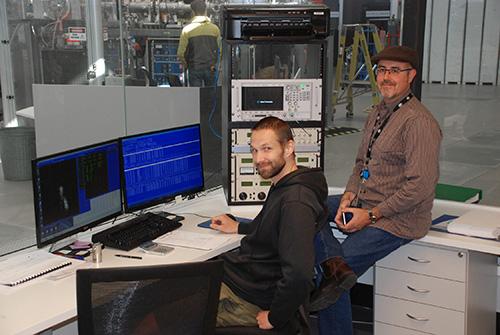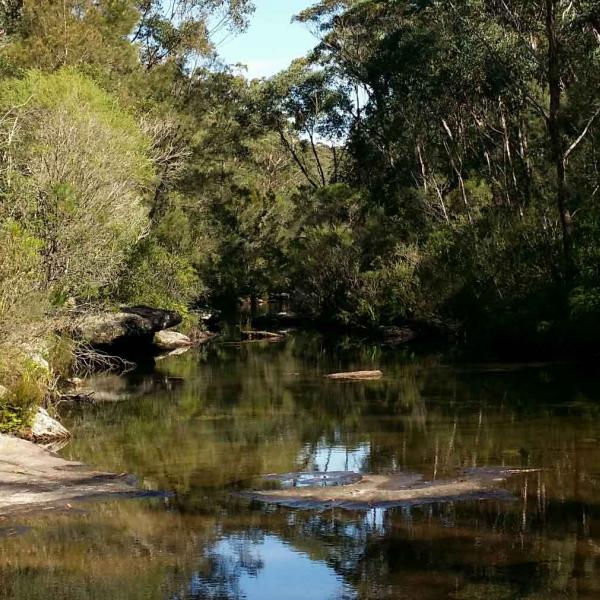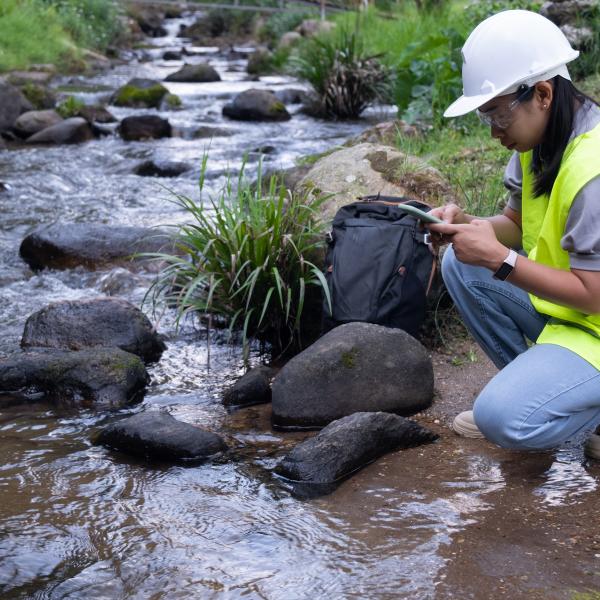

Published on the 22nd November 2021 by ANSTO Staff
Key Points
-
ANSTO groundwater experts have collaborated with the NSW Department of Planning, Industry and Environment on a comprehensive survey of groundwater resources in the state
-
A state-wide survey enables the government to formulate the best management policies for these limited, invaluable resources
-
Isotopic analysis at ANSTO can provide information about groundwater residence time, sources of recharge, whether the groundwater has undergone evaporation, the origin of groundwater, flow velocity and direction, interrelations between surface waters and groundwaters, and connections between different aquifers
ANSTO groundwater experts have collaborated with the NSW Department of Planning, Industry and Environment on a comprehensive survey of groundwater resources in the state.
The project involved the collection of 957 groundwater samples from 588 bores for analysis at ANSTO and other facilities.
“The study aims to collect a state-wide dataset that forms a baseline of groundwater resources for 2020-21. This type of information is crucial in assessing how groundwater resources respond to abstraction and climate change over time,” explained Principal Research Scientist Dr Dioni Cendón and the Groundwater project team at ANSTO who were part of similar surveys at specific groundwater basins in the past.
The NSW government has made a substantial investment to undertake this comprehensive survey, which complements a large inventory of data on groundwater resources. Read more
ANSTO played an advisory role helping the Department of Planning, Industry and Environment identify suitable sampling sites for the project with Cendón and Acting Leader of Environment research Dr Karina Meredith, providing essential information on isotopic sampling protocols for groundwater, and shared groundwater knowledge from previous ANSTO studies undertaken in key NSW groundwater catchments.
For the project, NSW was divided into four zones and commercial contracts were developed for those regions for collection of the samples.
For this project, groundwater samples are abstracted from three different depths from shallow to very deep.
The oldest water, which may be many thousands of years old, can be found at varying depths in aquifers. In some cases, such as the Great Artesian Basin, the aquifers can be up to 1,000m below the surface.
“ANSTO measured the isotopes of the samples collected to gain information about groundwater residence time, sources of recharge and whether the groundwater has undergone evaporation.
“We can obtain this information using the stable water isotopes, tritium, radiocarbon and chlorine-36,” Cendón said.

Research scientist Dr Klaus Wilcken (left), who supervises measurements of chlorine-36 using the Sirius accelerator with Dr Dioni Cendón (right) at ANSTO's Centre for Accelerator Science
The use of the water isotopes, typically stable isotopes of hydrogen and oxygen, is the most economical but provides a significant amount of information.
Isotope techniques can also be used to identify the origin of groundwater, determine flow velocity and direction, investigate interrelations between surface waters and groundwaters, and find possible connections between different aquifers, among other things.
The stables isotopes act as tracers, particularly to study recharge processes in an aquifer. Recharge occurs by rainfall and surface water reaching the aquifer.
“We have worked with hydrogeologists from the Water Group at NSW Department of Planning, Industry and Environment on other projects over the years,” said Cendón.
“In the past, studies have focused on individual basins, such as the Murrumbidgee and the Namoi, so a state-wide survey is extremely important, considering the amount of water that is pumped for irrigation and other uses,” said Cendón.
“It allows you to formulate the best management policies for these limited, invaluable resources.”
The survey was also undertaken to gain information about water quality, which is ascertained using other techniques.
“I think we are going to see a more holistic approach to assessing and managing surface and groundwater resources in the future, that will capture information emissions, soil quality, the entire water column and landscape changes,” said Cendón.
“This could be critical for a fundamental understanding of the impact of environmental challenges, relating to climate, resource developments, such as coal seam gas, and agriculture.”
ANSTO hopes to be involved in the next phase of the project as the interpretation unravels the potential of all the data that has been gathered.
ANSTO has a diverse suite of capabilities for supporting groundwater research from end-to-end, including expertise in field sampling protocols, isotope extraction chemistry for sample preparation, radioisotope dating, stable isotope analysis, and data interpretation.
For more information:




